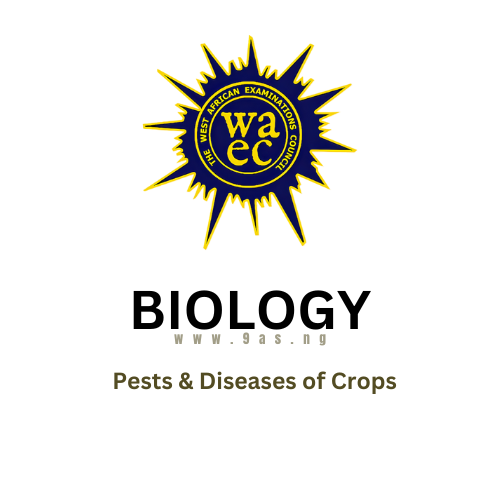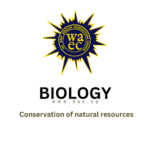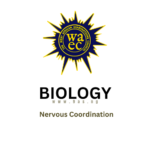1. The following organisms are pests of plants except
A. birds.
B. nematodes.
C. bacteria.
D. rodents.
2. The use of predators or parasites to control pests in the farm is known as
A. predator control.
B. chemical control,
C. biological control.
D. animal control.
3. Which of the following is the underlining principle in the adoption of biological control of pests?
A. Knowledge of agricultural practices by the farmer,
B. Relationship between plants and animal.
C. The presence of poisonous chemicals in the farm.
D. The predator-prey relationship in the ecological community.
The diagram below is an illustration of the life cycle of an insect. Study it and answer questions 4 and 5.

4. The adult insect in this life cycle is
A. housefly.
B. butterfly.
C. cockroach.
D. mosquito.
5. The larva is also known as
A. nymph,
B. maggot.
C. caterpillar.
D. chrysalis.
6. Predators are beneficial in pest control because they
A. are natural enemies of small mammals.
B. devour farm animals.
C. feed on pests of crops.
D. prey by game animals.
7. Which of the following plant diseases is indicated when grains of cereals are covered with a mass of spores?
A. Smut.
B. Mosaic.
C. Maize streak.
D. Fungal blast.
8. Pests can be controlled without the subsequent danger of polluting the ecosystem by
A. introducing a population of species similar to that of the pest.
B. increasing the population of the natural enemies of the pest.
C. eliminating the natural enemies of the pest.
D. keeping the population of natural enemies of the pest constant.
9. Which of the following measures is most likely to cause a damage to the ecosystem in the control of pests and weeds?
A. Use of ladybird insects to feed on aphids.
B. Introduction of bacterium to kill larvae of butterfly.
C. Introduction of Tilapia fish in ponds to feed on mosquito larvae.
D. Spraying insecticides to destroy cotton strainers in a cotton-field.
10. When a farmer sprays crops with a pesticide, the pesticide becomes
A. poisonous to all plants.
B. is broken down by soil algae.
C. easily washed down into lakes and rivers.
D. absorbed by bodies of mammals.
Use the list of insects below to answer questions 11 and 12.
I- Cotton Stainer
II- Honeybee
III- Termite
IV- Weevil
11. The insects whose activities are both beneficial and harmful to humans are
A. I and II.
B. II and III.
C. II and IV.
D. Ill and IV
12. Which of the insects destroys grains?
A. I
B. II
C. III
D. IV.
THEORY
1. (a) Name two pests and two diseases that can attack plant crops.
(b) State three ways of controlling plant diseases.
2. Name two viral diseases of plants.



